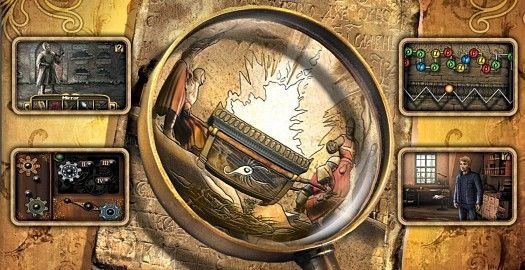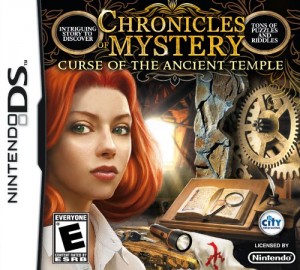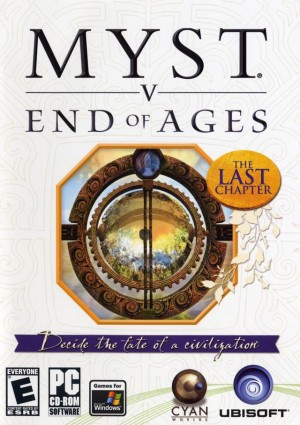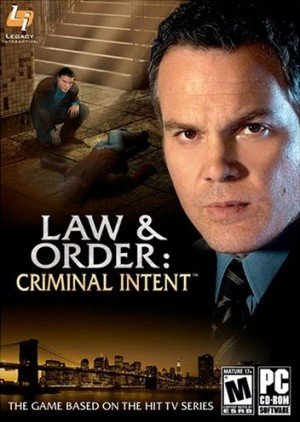Review for Chronicles of Mystery: Curse of the Ancient Temple

Chronicles of Mystery: Curse of the Ancient Temple may seem a little familiar. In 2008, City Interactive released a game called Chronicles of Mystery: The Scorpio Ritual on the PC, and here, about a year later, comes the newly-retitled Nintendo DS adaptation. But Curse of the Ancient Temple is no hack job port; it's clear that a great deal of thought went into how best to convert the game for a different platform. The developers have made an impressive attempt to reinvent the game accordingly, jettisoning the traditional adventure game structure and replacing it with three distinct styles of gameplay: integrated hidden object sections, standalone puzzles and minigames, plus some adventure lite bits. The end result is something that is well suited to gaming on the move, though it doesn't quite manage to live up to its potential.
After a well-realised tutorial section, which introduces players to the various gameplay styles, archaeologist Sylvie Leroux sets off for Malta in order to aid a Professor who appears to have stumbled across something unusual, but by the time she arrives, the Professor has disappeared. In the process of searching for him, Leroux uncovers a conspiracy with potentially devastating consequences. It’s a premise that will probably sound familiar even to those who didn’t play the PC version, and indeed the complete dearth of originality in Curse of the Ancient Temple is its single most disappointing aspect. I'm not quite sure how many times I've played a game involving a secretive religious cult with sinister motives, and a policeman who may or may not be involved with the enemy, but these now feel like nothing more than tired clichés. This game has at least gone to the trouble of substituting the Knights Hospitaller for the Knights Templar, but the change fails to amount to anything in practice.
The lack of imagination might not matter if the story were well told, full of twists and turns to keep players guessing, but here too the final results are disappointing. The game's English translation is generally pretty good, and things get off to a solid start, but the end of the game feels too rushed to fulfill its early promise – odd for a game with a year-old plot. Worst of all is the final cutscene, which resolves a dramatic showdown with a montage of stills that seems to ignore a previously important issue while being particularly difficult to follow. The plot is by no means a complete failure, as the sense of mystery and intrigue is well built up in the early stages, with a steady drip-dripping of information throughout, but if storytelling is your most important consideration then you’ll likely be disappointed here.
Fortunately, there's still plenty to enjoy in Curse of the Ancient Temple. It's generally a pleasant game to look at – while largely static, the graphics are bright, colourful and consistent, and interactive objects blend well with the surroundings without being impossible to spot. This is no mean feat given the console's low screen resolution, but it’s helped by the decision to have rooms larger than a single screen in size, to be panned around using the stylus or the +Control pad. The aesthetic quality continues into the music, which manages a suitably epic feel at times and generates a good sense of tension during the minigames. It's a shame that there isn't a bit more variety – you'll hear the same small group of pieces an awful lot – and the absence of any speech at all or sound effects in the cutscenes is fairly noticeable, but for the most part the production values of Curse of the Ancient Temple belie its budget price tag.
These positive vibes continue throughout much of the gameplay, too. Curse of the Ancient Temple is broken up into a number of short levels, which tend to follow the formula of a short hidden object section, followed by some further exploration of the same area that's more akin to a traditional adventure game, with a puzzle or minigame thrown in for good measure. This works well for gaming in short bursts, and ensures that there's always some diversity each time. Additionally, playing through the main story allows you to unlock the minigames for separate access later, and there are also bonus hidden object screens that are only loosely connected to the story, which can greatly increase the game's longevity.
The hidden object sections, both in and out of the main story, seem well designed. Inside the game proper, they're generally fairly straightforward, as objects are placed in sensible locations and are sensible sizes, which prevents these hunts from feeling too implausible. More importantly, unlike many casual games, here the objects themselves are integrally related to the story, rather than a random list of items to locate. You’re always told which items are required and incorrect clicks count against your point total, but every item is directly related to the story and is necessary to proceed. The unlockable levels, on the other hand, follow the more traditional method used by hidden object games, with items placed in strange locations and much more carefully camouflaged. These levels also have greater replay value than the main game, because the objects chosen are randomized.
Much of the rest of the game feels even more like an adventure lite. In these sections, Sylvie might need to make use of her inventory (which, reasonably, contains the items found during the hidden object bits) in order to get around an obstacle, find a hidden compartment, or some other such activity. These segments give the illusion of greater freedom, as you’ll need to figure out what to do on your own through descriptions and comments provided when tapping on objects in the environment. However, they're designed in such a linear way that they're unlikely to have anyone stumped for long, with only a couple of screens at most to move between and a limited number of hotspots with which to interact in any given area.
Every so often, a standalone puzzle or minigame turns up to shake up the gameplay a bit, and these are probably the most uninspired activities of the game. Not because what's here is terrible, as they can be pleasant enough diversions, but because they don't really offer any great challenge and fail to develop over the course of the game. These tasks fall into a handful of categories: some involve navigating through a maze, while others charge you with picking a lock, matching items, solving jigsaw puzzles and so on. For the most part they're exceptionally easy, particularly the few DS-specific tasks, which further show a lack of imagination on the part of the developer: one minigame consists entirely of blowing into the microphone, and I lost track of the number that required me to frantically scrub the touchscreen with the stylus. I was expecting these to get more interesting and complex when they made their return later in the game, but that didn’t happen. Indeed, the only type of recurring minigame that I failed on my first attempts were those that involved dragging the stylus through a tube without touching the sides, where the margins for error can be quite small and making too many mistakes means running out of time.
Yes, there are time limits in Curse of the Ancient Temple, though most of them are optional. You're generally given six or seven minutes to find the necessary objects and do the adventuring in any given level, and a couple of minutes to complete each minigame. By choosing to play in “Relaxed” mode, you can remove these timers from the main story, though this also stops the game from monitoring your score and restricts the awards you can unlock. That said, I had no difficulty completing the vast majority of the game well within the time limit on my first run-through, so it's not particularly difficult to play in the timed mode. There's also a convenient hint system built-in, with a recharging timer. Tapping on this actually makes things a bit too easy, because it blatantly tells you what to use the stylus on next, but the feature does prevent the story from ever grinding to a halt, which is well suited to the game's casual style.
The overall lack of challenge ensures that Curse of the Ancient Temple isn’t particularly long. There are seventeen levels in the game, which is a healthy number, but with the time limit on each stage set at no more than about ten minutes, players could easily blitz through the story in two or three hours. There are a handful of hidden scrolls to find along the way that reveal some backstory about the Knights Hospitaller, along with the bonus hidden object areas to try once unlocked (which could certainly be returned to a few times each) but this is not a game that is going to keep anyone going for weeks.
So, should you play Chronicles of Mystery: Curse of the Ancient Temple? That really depends on what your expectations are. While there's nothing particularly wrong with it (rushed ending aside), there's also nothing especially spectacular or memorable. With some well-designed hidden object sections and light adventuring, plus some passable if slightly iffy puzzles and minigames, it's a reasonable way of passing time while on the move, though the clichéd story prevents the game from ever truly repaying your investment, and it won’t keep you busy for long. City Interactive deserve praise for their attempts to reinvent an earlier game for the handheld market – a formula I hope they return to – but they haven't quite got the balance right this time. It’s a promising start that offers a few hours of decent entertainment, just one that never unearths much imagination along the way.





























